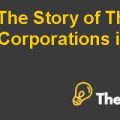
Is competition a contribution to or an enemy of sustainability?
Sustainability is the demand of time, investors and the environment alike. Now the first question that comes to an investor is, ‘how sustainable the business is, I am investing in’. Let us look at first, what sustainability is, then we will look into its relation with competition, and assess whether it is a contribution or an enemy to the business. Sustainability is, synchronizing the processes and systems, such that the human and non-human parts on earth can live in harmony. As businesses are going global rapidly, it is expected from businesses to carry their operations such that they do not forgo sustainability. The world is moving towards by pursuing techniques that help their business to maintain their competitive landscape through incorporating sustainability. Business is a larger notion that includes everything, from employees, to stake holders, to the supply chain and even the whole value chain creation; thus it needs to act in a sustainable manner. In essence, sustainability is need of the instance; hence it should be embraced throughout.
Everyone perceives sustainability in a different manner. Therefore, each has its own definition of what sustainability is. In general, sustainability is something that serves in the long run and not only today. In addition, sustainability as a competitive landscape is something that requires costs. This competitive advantage must be persisting and measurable. For example, Nike, the number one athletic apparel producer, is holding the first mover advantage in taking actions in Athletic Apparel Industry in order to produce sustainable products (e.g. jerseys from the recyclable plastic bottles). There are several options to choose from when one plans to achieve sustainability in its operations. These options include; recycling, cost differentiation, reduction in carbon footprint, reduction in emission of the greenhouse gases, reduction in usage of non-renewable fossil fuels, controlling water, land and air pollution etc. Nike sustained its position through recycling option that ultimately gave it a cost advantage over two of its major competitors; Adidas & Puma. However, risks are ambiguous in carrying the sustainability options, and therefore people are reluctant to change. It is seen that democrats are less concerned to their emissions of the greenhouse gases and sustainability, compared to the republicans. America (60% citizens are least concerned) and China (61% citizens are least concerned); they both are Democratic Countries, as cited in a source (Shawn, 2013). They are seen to emit more greenhouse gases compared to Republican countries.
There are several barriers to sustainability; it is not only the citizens, which show reluctance to change in status quo but other barriers also have a significant impact on resistance to sustainability. These include social norms, the institutional design and ignorance, competing attitudes and habits, plus the psychological and social forces. Id these forces are not stopped, then they will result in catastrophic affects by the seismic activities that are an after math of hydraulic freckling. Now the discussion will move towards how sustainability contributes to the benefits of the firm and how it acts against the welfare of the society.
Talking about the case of sustainability first, it is now seen to move out of the so called green silo. It is now seen as a value creation silo. There are several expert opinions on purporting the case of sustainability. Moreover, novice opinions are also there. According to experts (having expertise in incorporating sustainability in their operations), sustainability is all about supply chain management. It includes influence of all economic, social and environmental factors. Experts support their argument by saying, “sustainability helps boost business, when it is supposed to shape the routine ways of carrying operations”. Whereas according to novices, sustainability is all about improving the business viability. Further, novices say that business should move in a direction that serves consumer concerns; on the contrary, experts believe their products must serve consumer awareness. Experts further add that, employees’ interest must be preserved above all, and that, they must get awareness on how their efforts should move along in retaining a sustainable environment. It is evident from above supporting points, which are in favor of sustainability that it helps a firm to grow in a healthy manner. Sustainability has several benefits, first one is that it helps a firm to become cost efficient, then it helps the firm to achieve a competitive edge over its competitors by using the best ever techniques that will produce sustainable products.
However, firms are still lacking the ability to take decisive corporate actions. There can be several reasons for this lack in ability. One reason can be the mounting pressure from the shareholders. Shareholders now follow the loyal agent’s law, which states that the firm has to pursue single-mindedly benefits for the shareholder’s welfare. The other reason for this inability is the combined impact of the external factors, out of which government’s role is the ..................................
This is just a sample partial case solution. Please place the order on the website to order your own originally done case solution.










